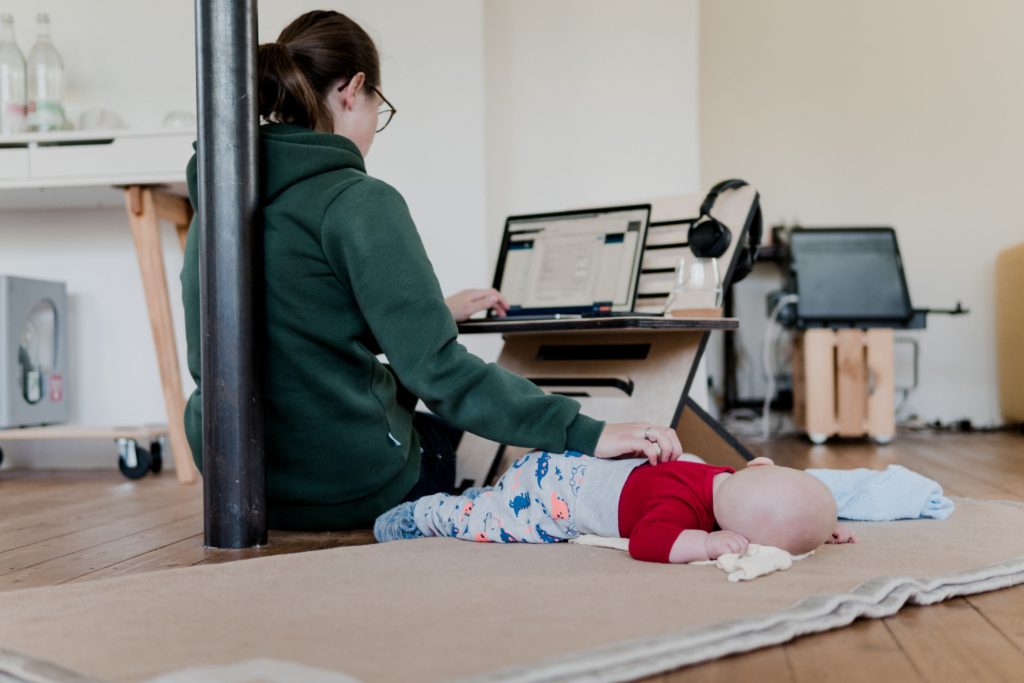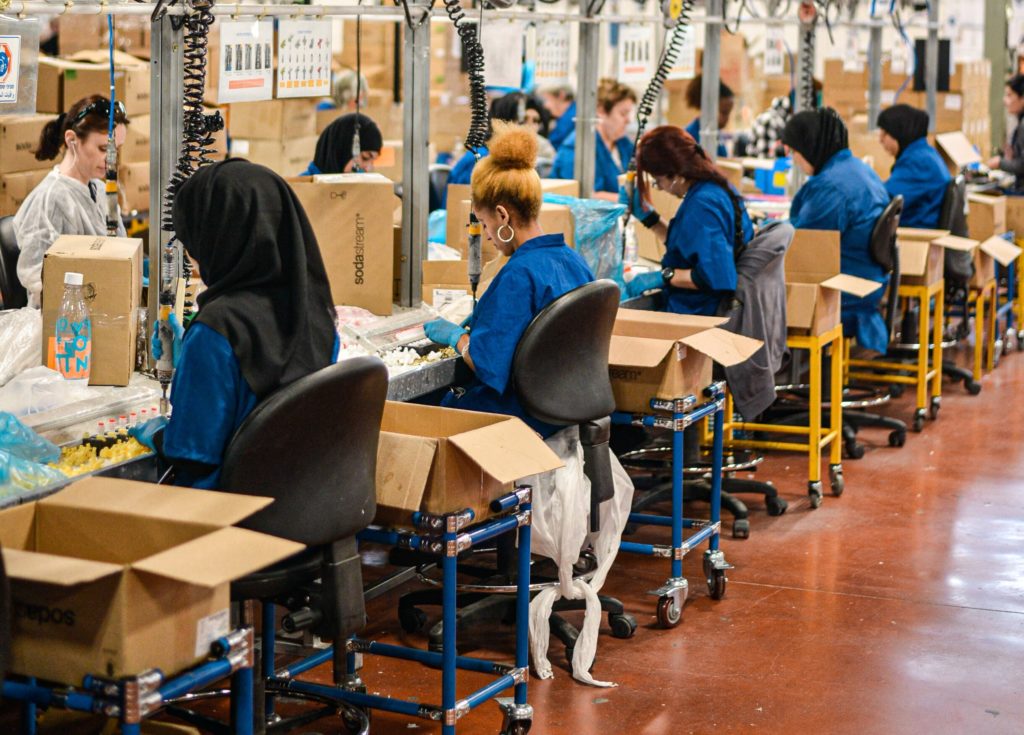Hybrid working is shaking the traditional workplace rule book. How do we communicate effectively? How do we instill productivity, accountability, and efficiency without the usual employee visibility? How do we make working in different places work for every employee in the organization? We explore the problems the hybrid workplace poses – and the possible solutions.
Corporations hit the news every week detailing plans for the new normal. For every Barclays and Mondelez forecasting the end of the office as we know it, there is a company boss planning to put a stop to working from home as soon as it is safe to do so. David Solomon, CEO of Goldman Sachs, argues that there won’t be any ‘new normal’ within his organization and that remote work is “an aberration”.
Right now, talk of the future of work is chaotic. No one knows exactly what the workplace will look like in a year. But right now, with data influencing restrictions and a workforce that is, largely, making working from home a success, a hybrid workplace seems the most organic outcome to the events of 2020.
Tasked with improving your internal comms?
But of course, like any hastily-drawn together plans, this new way of working has its shortcomings. In order to make it work, organizations are looking at possible solutions to ensure organizations can move forward successfully.
So what are these challenges? And what can organizations do to help those who cannot experience the benefits of a more flexible way of working?
Addressing the various working from home issues that are emerging, we offer potential solutions to overcome them and discover that rather than make people fit around work, we need to make work shape around the complex and varying needs of the workforce.
At-risk groups

Ongoing research from Gartner identifies three possible at-risk groups in the new working from home movement. These are the employees that the research company recognizes as enduring unfair career consequences through a range of shortcomings:
Digital introverts: these may be employees who are work-driven but screen-shy, unconfident in front of the camera, or simply digitally under-trained.
Employees who lacked confidence in virtual meetings would usually participate quite freely during in-person meetings. While they enjoy working from home, they are uncomfortable with speaking up online. This may seem them being overlooked by managers when it comes to advancing their careers further.
As always, it comes down to who is more visible. While work rates remain the same, Gartner found that those working remotely are twice as likely to receive corrective feedback.
Women: Data shows that the burden of childcare fell mostly on women during lockdown. This trend expects to follow in a similar fashion while working from home, running a home, and managing children. Research shows that traditional gender demarcations are still ongoing in the workplace. Gartner expects this increase in childcare responsibilities to contribute largely to the gender wage gap to worsen in 2021.
Junior staff: Newcomers are expected to not advance as quickly due to below-standard remote working practices. These employees – particularly younger staff members – are seen to be more hindered by some of remote working’s shortcomings, particularly insufficient processes like onboarding and training. This group will be regarded as a major flight risk to organizations once the job market resumes.
Tasked with improving your internal comms?
The fix: The digitally introverted, those who live outside of a reasonable commute, women with young children, and younger employees have all been pinpointed as vulnerable to the perils of poor hybrid workplace management. Whether it’s at risk of being ignored or bypassed, condemned to the burden of childcare reducing their likelihood of getting back into the office, or overlooked when it comes to promotion. These groups are bearing the brunt of online, remote work. These fears may be being realized, but should they be accepted?
With a greater focus on diversity and inclusivity, work should provide the encouragement and support that these groups of people need in today’s workplace. As we move forward, teams should be very clear on the commitments of others and draw up a charter for the team, so everyone knows each others’ commitments and situations. Senior-level leadership should follow by example and build an employee-first culture. There is a huge need to remove the idea of presenteeism and place as much importance on remote workers as in-office employees. Organizations should also develop robust and engaging onboarding and training programs to ensure that those at home benefit from the same opportunities as traditional office workers.
Mixed mode

The hybrid workplace promises many benefits, but there are fears that a mixed mode of working, where half the team remains at home, while the other half commute could pose serious problems. Nicholas Bloom, the British economist at Stanford University, suggests office-based team workers would undoubtedly experience more privileges than their at-home counterparts.
Backing up the warnings from Gartner, a study – carried out years before the epidemic – looked at a Chinese travel firm who trialed a working-from-home initiative. The results showed that people who worked at home were promoted at about half the rate of those in the office. This revealed a bias for those who remain in the office, who are readily visible, exchange conversation, become a part of the in-house culture. This group are seen to foster more ‘managerial capital’ than those who are only connectable through Zoom or Microsoft Teams.
The fix: So, can the hybrid workplace take off? Yes, according to Bloom, but only if organizations have more influence on the schedules of workers – and ensure that team members keep the same rota on office and remote work. If teams are going ahead with hybrid working, it’s advised that they keep to the same calendar, attending the office and working from home on the same days. That way, teams can collaborate together on the chosen days, and focus on single-person tasks at home. Everyone is working with the same schedule, reducing conflict, and nurturing better ways of communicating.
Noise environment

Studies have shown that workers are almost 65% less productive in a noisy work environment than employees who work in much quieter offices. Which is why organizations go to great lengths to secure a pleasant ambient sound level. Installing soundproofing walls, fitting acoustic screens, and quiet pods are some ways of reducing distracting noise in shared, commercial space. But at home, without these structures in place, workers can be subjected to loud machinery, traffic, construction work, and noisy neighbors.
The fix? This issue has been made complicated, not least by the various lockdowns which have seen homeschooling and work attempt to operate side by side. In terms of noise pollution from external sources, some countries are working out ways of enabling home work to continue as unhindered as possible. Portugal, for example, is recognizing the importance of ambient noise in and around homes and so is imposing limits to noise levels within residential buildings. Reuters have reported some kickbacks to these plans with the construction sector fearing short-term damage and demanding a clear time limit to the rule since “COVID will end, but remote working won’t.”
Tasked with improving your internal comms?
Equipment

Many of us have had to find makeshift office space while working from home. There are many dos and don’ts when it comes to working from home, and it’s recommended that home workers need to set up a suitable home office, ideally with an ergonomic chair and desk at the right level. Despite this, research shows 72% of Americans have worked from bed during the pandemic. There are plenty of studies to show that bed-based work can be bad for both the mind and body. Blurring work and rest can impact productivity, and the ability to sleep soundly and poor posture could also result in headaches and back pain. Sprained necks and sciatica have been some of the most common medical working-from-home complaints of the last year.
The fix? Organizations need to be mindful of their employees’ working environments – even if work is at home. Supplying office furniture that has been designed to aid comfort and ease back issues to remote workers should be mandatory; however, according to Procurify, only 53% of businesses do this. If you can’t work at a desk, experts suggest using pillows to support your lower back and knees and positioning your screen in a way that is similar to sitting in a proper chair.
WiFi connection

The pandemic triggered an urban exodus, as people paying high rates to live in major cities realized that location no longer mattered: New York City saw a huge popular decline because of this. In the throes of COVID-19, people left their urban sprawls, preferring more open space, a cheaper cost of living, and a cleaner lifestyle. However, with the benefits of country living comes logistical problems: poor WiFi connections affect many rural areas, causing a digital divide that can profoundly impact the careers of those who don’t live in cities.
According to the Federal Communications Commission, more than 18 million Americans – around 5.6 percent of the US population – lack access to high-speed internet. High-speed internet refers to a connection strong enough to browse the web, check email, and stream videos all at the same time.
And with remote working, homeschooling, and staying home as much as possible, the burden on home broadband is greater than ever before. Nearly two-thirds of rural American households don’t have access to that type of high-speed symmetrical connection, which should be capable of handling both uploads and downloads at 25 megabits per second.
Poor WiFi has a massive impact on students trying to learn, people trying to apply to jobs, and employees trying to maintain the same levels of productivity experience pre-COVID. Affordability is a problem too – the cost of broadband creating a huge disadvantage to low-wage households.
The fix? While a concern in Europe too, the vast expanse and larger population in the US means that the digital divide is a pressing issue. By the end of 2020, Congress had allocated $3.2 billion for an emergency broadband benefit program which promised up to $50 a month to subsidize internet subscriptions for many low-income Americans.
The Federal Communications Commission said recently that it looks to roll out plans within the next two months. Corporations have been stepping in too. The CTIA, the wireless trade association, has built a portal where school districts can submit how many connectivity requirements they need, enabling them to be connected to local network providers who offer free or heavily deducted services. These short-term solutions will require longer-term changes to not only the rural/urban divide, but also the affordability aspect too.
Isolation

Loneliness and isolation were the buzzwords in 2020, and while restrictions are lifting slowly across the globe, many workers will continue to battle with isolation while working from home. Remote working demands careful management of this area. Your organization needs to be mindful of how remote workers engage with their workplace, and what software and services could improve the employee’s relationship with work.
Tasked with improving your internal comms?
If staff are feeling cut off, silo-ed, unappreciated, or simply out the loop while working from home, the resulting sense of isolation can have a detrimental impact on productivity and overall well-being. At a time when our employees need to come together and adapt to a truly unique set of circumstances, it’s vital to take those steps to reduce any risk factors for isolation upfront.
The fix? While hybrid working can remedy these negative feelings by offering a few days of office work during the week, this isn’t an option for many remote workers. Many businesses are adopting coworking at a shared, local space as a way to allow home workers who live in close proximity to meet up and work together.
Resentment

Of course, there are those jobs that can only be done in company space. For those employees who have to work on the shop floor, or in warehouses and factories, there may be a feeling of ‘us and them’ as their clerical co-workers opt to remain at home. Similarly, there may be office workers who have maintained their in-office status throughout the pandemic who are feeling resentful towards their at-home colleagues.
The fix? There have been some cases where in-office staff have been rewarded with bonuses and perks to assuage negative feelings. But on a long-term basis, a greater understanding of the workload and accountability of remote workers needs to be implemented, and this culture of home or hybrid working be embedded from the onboarding stage onwards.
Commuting

The ‘us and them’ culture does have further cause for concern. Commuting to the office is a big deal – both in terms of time and money. According to the Bureau of Labor Statistics, in 2019, the average US household spent $2,094 on gas and motor oil, while total transportation expenditures reached $10,742. This works out at about $29 per day spent on transportation. There are clear disparities between those workers who stay at home and those who need to spend time and money on getting to their workplace in order to fulfill their role.
The fix? Where possible, workers should be given as much flexibility as possible. With working from home taking this cost down to zero, it’s something that organizations may have to factor in when it comes to reflecting this cost in paychecks for those who have to make the commute.
Short term issues for long term gains

Organizations have been surprised at the success of working from home. However, remote working isn’t without its drawbacks. There are several aspects of home working that need reviewing and modifying in order to maintain long-term success. However, these challenges are not insurmountable and could quite easily be seen as teething problems to a new mode of working that is still in its infancy.
Some professions will not bend to hybrid working. The responsibilities and regulations of certain roles require the security and infrastructure that a traditional office provides. However, for most of the workforce who could theoretically split their time between office and home, this new way of working offers up far more advantages than disadvantages.


